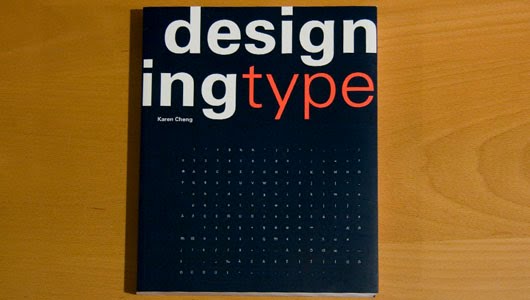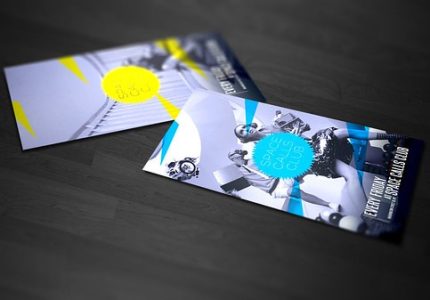Historical Overview of Graphic Design and Engineering
The history of graphic design and engineering is a fascinating journey that showcases the evolution of visual communication and technological innovation. From early manual illustrations and craftsmanship to the digital revolution, these fields have continuously transformed to meet the changing needs of society. Understanding their historical development highlights the interplay between creative expression and technical precision, shaping the modern landscape of visual and structural design.
Origins of Graphic Design
The origins of graphic design and engineering are deeply interconnected, tracing back to ancient civilizations where visual communication and technical craftsmanship began to develop simultaneously. Early forms of graphic expression, such as murals, carvings, and inscriptions, served both artistic and functional purposes, laying the groundwork for modern design principles. Engineering contributed to these developments through innovations in materials, tools, and construction techniques, enabling more complex and durable visual displays.
- Ancient Egypt and Mesopotamia: Development of hieroglyphs, cuneiform, and early inscriptions that combined artistic skill with communication needs.
- The Renaissance Period: Emergence of printmaking techniques, including woodcuts and engravings, which facilitated mass communication and laid foundation for modern graphic arts.
- Industrial Revolution: Introduction of machinery, lithography, and typographic innovations that revolutionized printing and design processes.
- 20th Century: The rise of modernist movements, digital technology, and computer-aided design, transforming the scope and methods of graphic design and engineering.
Evolution of Engineering Practices
The historical overview of graphic design and engineering reveals a rich interplay of creativity and technical innovation that has shaped modern visual communication and engineering practices. Early engineering feats, such as the construction of the pyramids or aqueducts, involved precise technical drawings reminiscent of graphic representation, laying foundational principles for visual clarity and clarity. With the advent of the printing press, graphic design evolved from manual illuminations to more standardized methodologies, enabling wider dissemination of information and ideas. The Industrial Revolution marked a significant turning point, as engineering practices became more scientific and systematic, integrating graphical representations like technical drawings and blueprints to communicate complex concepts efficiently. The 20th century introduced digital tools, revolutionizing both fields by enabling designers and engineers to collaborate seamlessly through computer-aided design, improving precision and innovation. Today, the convergence of graphic design and engineering continues to evolve, emphasizing interdisciplinary approaches, sustainable practices, and advanced visualization technologies to meet contemporary challenges. This ongoing evolution highlights the importance of visual communication in translating engineering concepts into accessible and impactful designs across various industries.
Intersection of Disciplines in History
The historical relationship between graphic design and engineering illustrates a fascinating intersection of creativity and technical precision that has shaped modern visual communication. From the early use of engineering principles in the creation of architectural drawings and technical diagrams, to the development of printing technology, these disciplines have continually influenced each other. During the Industrial Revolution, advancements in printing presses and manufacturing processes enabled more sophisticated graphic design techniques, emphasizing the importance of engineering in producing durable and efficient visual media. The 20th century saw the rise of digital tools that merged engineering concepts with graphic design workflows, fostering innovation and expanding creative boundaries. This convergence highlights the evolving dialogue between artistic expression and technical expertise, underscoring their combined impact on visual communication in history.
Fundamental Principles
Fundamental principles serve as the guiding foundation in both graphic design and engineering, ensuring that creations are effective, functional, and aesthetically pleasing. These principles help professionals in these fields to communicate ideas clearly, solve problems efficiently, and achieve their desired outcomes. Understanding and applying these core concepts is essential for developing innovative and well-structured solutions in a competitive environment.
Design Principles in Graphic Arts
Fundamental principles in graphic arts are the foundational concepts that guide effective visual communication, including balance, contrast, alignment, proximity, repetition, simplicity, and function. These principles ensure that a design is visually appealing, clear, and functional. Design principles in graphic arts focus on creating harmony and order within a composition, helping to convey messages efficiently and aesthetically.
In graphic design and engineering, understanding and applying these principles is essential for developing designs that are both visually compelling and technically feasible. Balancing visual elements, establishing clear hierarchies, and maintaining consistency contribute to successful communication and user experience. By adhering to these core principles, designers can craft solutions that are not only attractive but also serve their practical purposes effectively.
Core Engineering Concepts
Fundamental principles and core engineering concepts form the backbone of effective graphic design, integrating visual creativity with technical precision. In engineering, these principles ensure that designs are functional, reliable, and optimized for performance, while in graphic design, they emphasize aesthetic appeal and clear communication. A strong understanding of geometry, proportion, and symmetry is essential for creating balanced and harmonious visuals. Additionally, concepts such as system thinking and iterative development aid in refining designs, ensuring they meet both creative and technical standards. The application of engineering principles like material strength and ergonomics can influence the choice of digital tools and physical media, enhancing durability and user experience. Ultimately, the synergy of these fundamental principles ensures that graphic design not only captures attention but also performs effectively across various platforms and mediums.
Shared Elements: Creativity and Precision
In the realm of graphic design and engineering, fundamental principles serve as the foundation that guides effective communication and functional innovation. Central to this discipline are shared elements such as creativity and precision, which work in tandem to produce compelling and durable visual solutions.
- Creativity: This element encourages inventiveness and originality, allowing designers and engineers to develop unique solutions that capture attention and convey messages effectively.
- Precision: Accuracy and meticulous attention to detail ensure that designs are not only visually appealing but also technically feasible and reliable, especially in engineering applications where functionality is paramount.
Balancing creativity with precision enables professionals in graphic design and engineering to push boundaries while maintaining clarity, usability, and structural integrity in their work.
Tools and Technologies
Tools and technologies play a vital role in advancing the fields of graphic design and engineering, enabling professionals to create innovative solutions and visually compelling projects. From traditional drawing instruments to cutting-edge software, these tools enhance precision, efficiency, and creativity. Embracing the right technologies allows designers and engineers to collaborate effectively, pushing the boundaries of what is possible in their respective disciplines.
Graphic Design Software
Graphic design software plays a crucial role in the fields of graphic design and engineering, providing designers and engineers with powerful tools to create, visualize, and refine their ideas. Popular software such as Adobe Photoshop, Illustrator, and CorelDRAW enable users to develop detailed illustrations, vector graphics, and digital art with precision and creativity. In engineering, tools like AutoCAD, SolidWorks, and CATIA facilitate the development of complex technical drawings, 3D models, and prototypes, ensuring accurate representations and efficient workflows. These technologies enhance collaboration, improve accuracy, and streamline the design process across both disciplines, fostering innovation and high-quality outputs.
Engineering Software and CAD Tools
Tools and technologies play a vital role in both graphic design and engineering, providing professionals with the means to create, visualize, and optimize their projects effectively. Engineering software encompasses a wide range of applications, from simulation and analysis to project management, enabling engineers to develop precise and efficient solutions. CAD tools, or Computer-Aided Design software, are essential in producing detailed technical drawings and 3D models, facilitating accurate design and modifications. In graphic design, software like Adobe Photoshop and Illustrator allows designers to craft visually compelling images and layouts, leveraging digital tools for creativity and precision. The integration of advanced tools and technologies accelerates workflows, enhances accuracy, and fosters innovation across both disciplines.
Emerging Technologies and Digital Integration
In the fields of graphic design and engineering, tools and technologies play a crucial role in enhancing creativity, precision, and efficiency. Classic software like Adobe Photoshop, Illustrator, and CAD programs form the backbone of design workflows, enabling professionals to produce detailed visual and technical solutions. Emerging technologies such as augmented reality (AR), virtual reality (VR), and 3D printing are transforming how designers and engineers collaborate, prototype, and visualize concepts in real-world contexts. Digital integration facilitates seamless communication between different design phases, allowing for real-time updates and feedback, thereby streamlining project delivery. As these technologies continue to evolve, they offer innovative opportunities for more interactive, sustainable, and innovative design practices that push the boundaries of what is possible in graphic design and engineering.
Applications and Industries
Applications and industries play a crucial role in shaping the fields of graphic design and engineering. These disciplines are highly versatile and impact numerous sectors, including technology, advertising, manufacturing, and digital media. Understanding the various applications allows professionals to innovate effectively and meet the diverse needs of modern society. From creating visually compelling graphics to designing sophisticated engineering solutions, these industries continue to evolve and influence everyday life.

Advertising, Branding, and Visual Communication
Graphic design plays a crucial role in various applications and industries, particularly in advertising, branding, and visual communication. It serves as a powerful tool to convey messages, establish brand identity, and engage audiences effectively. In advertising, graphic design helps create compelling visuals that attract attention and persuade consumers. Branding relies on consistent and memorable graphic elements to build recognition and trust. Visual communication through graphic design ensures information is presented clearly and aesthetically, facilitating understanding across diverse audiences and mediums. Overall, the integration of graphic design in these fields enhances performance, visibility, and impact of products and services in a competitive marketplace.
Structural and Mechanical Engineering Design
Graphic design and engineering play a vital role in various applications and industries, particularly within structural and mechanical engineering. These fields leverage visual communication tools and technical drawing techniques to improve project accuracy, efficiency, and innovation. Effective graphic design enhances the clarity of complex engineering concepts, facilitating better understanding among stakeholders and aiding in precise execution of designs.
- Structural Engineering: Graphic design is used to create detailed blueprints, 3D models, and simulation visuals that help visualize load distributions, structural integrity, and safety measures. These visual tools assist engineers in optimizing structural designs for stability and cost-effectiveness.
- Mechanical Engineering: Graphic design supports the development of technical drawings, product prototypes, and CAD (Computer-Aided Design) visuals. This allows for precise manufacture, testing, and modification of mechanical components and systems.
- Construction Industry: Visual representations such as renderings and animations help communicate architectural and engineering projects to clients and contractors, ensuring accurate implementation of design specifications.
- Manufacturing: Graphic design techniques assist in the creation of assembly instructions, technical manuals, and quality control visuals that streamline production processes and reduce errors.
- Research and Development: Visual tools assist in conceptualizing innovative engineering solutions, enabling easier identification of potential improvements and troubleshooting.
Product Development and Prototyping
In the fields of graphic design and engineering, applications and industries heavily rely on innovative product development and prototyping to bring ideas to life. These processes facilitate the transformation of conceptual concepts into tangible models, enabling designers and engineers to test functionality, aesthetics, and usability before mass production.

- Product development involves integrating graphic elements with engineering specifications to create cohesive and user-friendly designs.
- Prototyping allows for early-stage testing, helping identify potential flaws or improvements in both form and function.
- Industries such as automotive, consumer electronics, and furniture design utilize these techniques to enhance product appeal and performance.
- Advanced digital tools and materials enable rapid iteration and customization to meet diverse market needs.
- Collaborative efforts across disciplines are essential for developing innovative solutions that align with user expectations and technical requirements.
Collaboration and interdisciplinary approaches
Collaboration and interdisciplinary approaches are essential in advancing fields like graphic design and engineering, where diverse expertise can lead to innovative solutions. By integrating principles from both disciplines, professionals can create more effective, aesthetically appealing, and technically sound designs. Embracing teamwork across backgrounds fosters creativity, problem-solving, and a deeper understanding of complex challenges, ultimately driving progress in these interconnected fields.
Cross-disciplinary Team Structures
Collaboration and interdisciplinary approaches are essential in the fields of graphic design and engineering, as they enable the integration of creativity with technical precision. By working together, professionals from diverse backgrounds can develop innovative solutions that address complex challenges in both visual communication and functional engineering. Cross-disciplinary team structures facilitate this synergy by fostering open communication and shared expertise, allowing designers and engineers to contribute their unique perspectives to a common goal. This collaborative environment enhances problem-solving capabilities, promotes the exchange of ideas, and leads to more holistic and effective project outcomes in the realm of graphic design and engineering.
Project Management Strategies
Collaboration and interdisciplinary approaches are essential in the fields of graphic design and engineering, as they enable the integration of creative vision with technical precision. By fostering teamwork across diverse disciplines, projects can benefit from innovative ideas, balanced solutions, and a more holistic perspective, resulting in designs that are both aesthetically appealing and structurally sound.
Effective project management strategies in this context involve clear communication, defined roles, and flexible workflows that accommodate the dynamic nature of design-engineering collaborations. Utilizing iterative processes, regular check-ins, and feedback loops ensures that all team members remain aligned with project goals and deadlines, leading to successful outcomes that blend artistic creativity with engineering feasibility.
Case Studies of Successful Collaboration
Collaboration and interdisciplinary approaches are essential in bridging the gap between graphic design and engineering, fostering innovative solutions and comprehensive project outcomes. By integrating creative visual strategies with technical engineering expertise, teams can develop more effective, user-centered designs that are both aesthetically appealing and functionally robust. Such collaborative efforts often lead to cutting-edge innovations and more efficient problem-solving processes.
One notable case study is the design of sustainable architectural projects where graphic designers work alongside structural engineers. In the Bullitt Center in Seattle, the visual branding and instructional graphics played a vital role in communicating sustainable features to occupants, while engineers ensured the building’s structural and environmental systems function optimally. This interdisciplinarity resulted in a highly functional, eco-friendly building that also effectively engaged its users.
Another example is the development of interactive public installations, such as the “Light Walk” project in Berlin, where graphic designers collaborated with electrical engineers. The project combined visual storytelling with complex circuitry to create an engaging experience for visitors, demonstrating how multidisciplinary efforts can produce innovative public art that merges design and engineering seamlessly.
Furthermore, in product design, collaborations between graphic designers and mechanical engineers lead to the development of smart devices that are both visually appealing and technologically advanced. The Apple iPhone’s sleek design and intuitive interface resulted from such interdisciplinary teamwork, exemplifying how integrating expertise across fields can produce groundbreaking products.
Overall, these case studies highlight that successful collaboration between graphic design and engineering relies on effective communication, mutual understanding, and a shared vision. Embracing interdisciplinary approaches not only enhances project quality but also sparks creativity, leading to innovative solutions that meet diverse needs and expectations.
Challenges and Future Trends
In the rapidly evolving fields of graphic design and engineering, professionals face numerous challenges driven by technological advancements and changing client expectations. Staying current with emerging tools, materials, and techniques is essential for innovation and competitiveness. Future trends suggest increased integration of digital technologies, sustainable practices, and interdisciplinary collaboration, shaping a dynamic landscape that demands adaptability and forward-thinking strategies.
Balancing Aesthetics and Functionality
Balancing aesthetics and functionality in graphic design and engineering presents ongoing challenges as designers seek to create visually appealing yet practical solutions. One of the primary difficulties lies in integrating innovative visual elements without compromising usability or technical performance. As technology advances, there is a growing demand for designs that are both sleek and user-friendly, requiring a keen understanding of user experience principles alongside artistic skills. Future trends point towards the increased use of AI and machine learning to optimize design processes, allowing for highly customized and efficient outcomes. Additionally, sustainable and eco-friendly materials and approaches are becoming essential considerations, pushing designers to develop solutions that are not only attractive and functional but also environmentally responsible. Ultimately, successful balancing of these aspects will rely on continuous technological innovation, interdisciplinary collaboration, and a deep understanding of human-centric design principles.
Innovations Driven by Technology
In the fields of graphic design and engineering, numerous challenges arise alongside exciting opportunities driven by technological advancements. Rapidly evolving software tools and digital platforms demand continuous skill development, while the need for sustainable and eco-friendly practices pushes designers and engineers to innovate creatively. Additionally, balancing aesthetic appeal with functional efficiency often presents complex problem-solving scenarios. As technology progresses, the integration of artificial intelligence, augmented reality, and 3D printing opens new horizons for more dynamic and interactive designs, transforming traditional workflows into more streamlined and innovative processes.
Sustainable Design and Engineering
Challenges in sustainable design and engineering within graphic design and engineering include balancing aesthetic appeal with environmental impact, managing resource efficiency, and integrating innovative technologies responsibly. As environmental concerns grow, professionals must develop eco-friendly materials and processes while maintaining visual effectiveness. Future trends anticipate the increased use of digital tools such as augmented reality and AI to enhance design accuracy and reduce waste. Emphasis on circular design principles and renewable resources will shape sustainable practices, encouraging designers and engineers to collaborate across disciplines to create environmentally conscious solutions that meet both functional and aesthetic goals.





